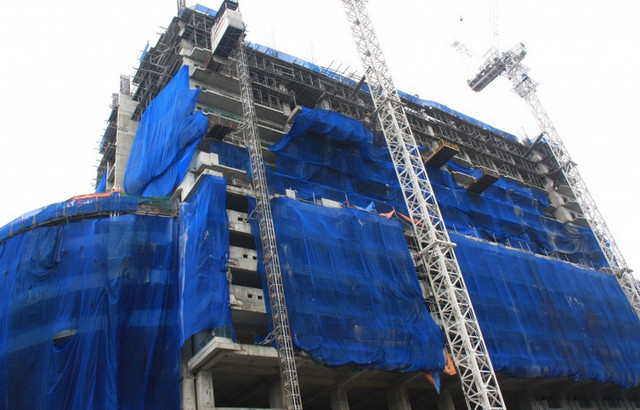SUMMARY
This is AI generated summarization, which may have errors. For context, always refer to the full article.
.jpg)
MANILA, Philippines – Senator Pia Cayetano intends to file a resolution on the controversial DMCI Homes condominium Torre de Manila which, despite zoning violations and protests from heritage advocates, was allowed by the Manila City government.
In a press release on Monday, August 4, Cayetano was quoted as saying she will file a resolution looking into national laws relevant to the Torre de Manila issue.
“I intend to file a resolution to look into our existing laws on our culture and national heritage,” she said.
The 40-plus-story condominium was primarily opposed by Manila residents and other concerned citizens because its floor-to-area ratio exceeded the set floor-to-area ratio limit for buildings in its location, thus burdening the small utility pipes, electricity, and water facilities in the area.
Located along Taft Avenue between Rizal Park and Adamson University, Torre de Manila is supposed to have a floor-to-area ratio of 4. But based on designs submitted to Manila, its floor-to-area ratio is 7.79.
But its the impact of the high-rise building on the Rizal Monument in Rizal Park that concerns Cayetano as chair of the Senate committee on education, arts and culture.
Due to its location and height, Torre de Manila will rise directly behind the shrine of national hero Jose Rizal.
Heritage advocates like Carlos Celdran say the tower will dwarf the shrine and ruin the sightline preserved to ensure the dominance of the monument. More than 8,000 people signed an online petition to stop the project.
The resolution, which Cayetano’s office is drafting, may call on cultural and heritage agencies of the government.
“We have agencies like the NCCA (National Commission on Culture and the Arts), NHCP (National Historical Commission of the Philippines), and then of course, the parties involved. I want to know from them if they know about Torre de Manila violations. Why did they construct? If issues were not resolved, that’s their burden,” she said in a mix of English and Filipino.
Too late in the game?
As of July 18, Torre de Manila is already 17 floors high, with work on the 17th floor 25% complete, according to the DMCI Homes website.
With construction in progress, can a Senate resolution really make a difference?

Cayetano says the argument that “it’s already there” is not enough to justify a project that has violated laws.
“Hindi naman p’wede ‘yun, di ba? (That’s not a good reason, right?) We cannot be ruled by circumstances just because we have failed to implement our laws. So that’s what I want to look into. What are really the repercussions of this? Because before you know it, there will be so many violations,” the senator said.
Aside from zoning violations, Torre de Manila may have flouted NHCP rules on preserving the dominance of important national shrines.
“Monuments should be given due prominence since they symbolize national significance…. The Rizal National Monument in Luneta and the Bonifacio National Monument are established as objects of reference. The monument should preferably be the focal point of a city or town center,” according to the NHCP.
The agency said that “keeping vista points and visual corridors to monuments clear” is one way to maintain dominance of shrines.
Cayetano’s planned resolution, which will look into the position papers of all stakeholders, will find out if new laws have to be made to ensure the national government has a say in what happens to landmarks of national significance.
Compromises
Cayetano also questioned compromises reached by DMCI Homes and the city government of Manila, saying that while they addressed local issues, they ignored national issues.
“One of it is the non-existence of proper sewerages and sanitation. Okay, so maybe that is solved on the local level. But there are other national issues and issues on historic significance,” she said.
One condition made by Manila to DMCI homes before approving the project was for the real estate company to “plant two layers of very tall trees between Torre de Manila and the Rizal Monument to strategically enhance the vista.”
“Will those ‘greens’ really be so high they will cover the building?” Cayetano questioned.
Even the final height of the condominium remains a mystery with different reports saying it will have 41, 46 and 49 stories. The DMCI Homes website itself does not indicate the building’s exact number of floors.
Torre de Manila, renamed “Terror de Manila” by those who oppose it, was first approved by former Manila Mayor Alfredo Lim.
After a temporary suspension of its construction, current Manila Mayor Joseph Estrada allowed the project to continue. – Rappler.com
Add a comment
How does this make you feel?
There are no comments yet. Add your comment to start the conversation.